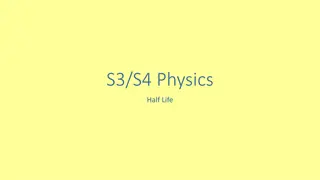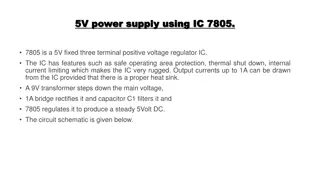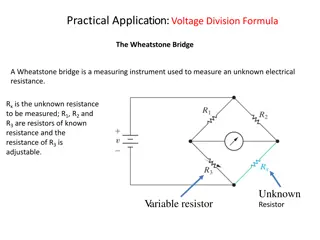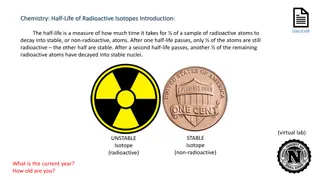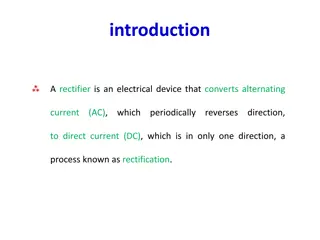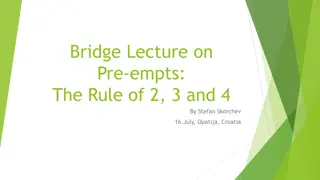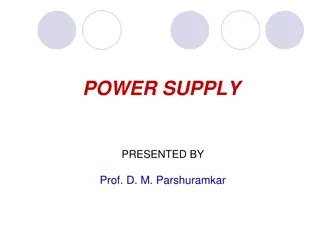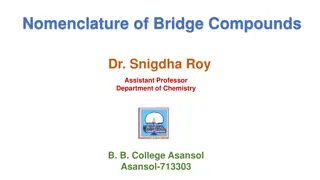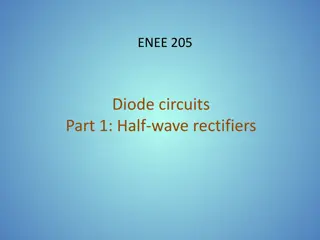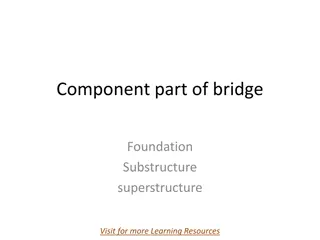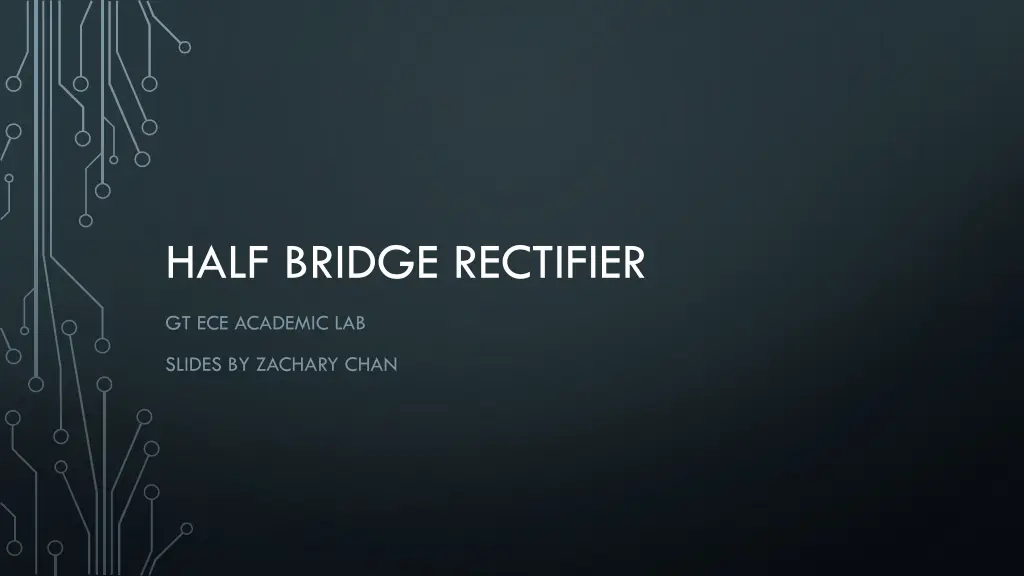
Understanding Half-Bridge Rectifiers for Electrical Engineering Students
Learn about half-bridge rectifiers, which convert AC to DC, their components like diodes and capacitors for smoothing, applications, and the importance of full-wave rectifiers. Explore lab slides by Zachary Chan for a comprehensive overview.
Download Presentation

Please find below an Image/Link to download the presentation.
The content on the website is provided AS IS for your information and personal use only. It may not be sold, licensed, or shared on other websites without obtaining consent from the author. If you encounter any issues during the download, it is possible that the publisher has removed the file from their server.
You are allowed to download the files provided on this website for personal or commercial use, subject to the condition that they are used lawfully. All files are the property of their respective owners.
The content on the website is provided AS IS for your information and personal use only. It may not be sold, licensed, or shared on other websites without obtaining consent from the author.
E N D
Presentation Transcript
HALF BRIDGE RECTIFIER GT ECE ACADEMIC LAB SLIDES BY ZACHARY CHAN
OVERVIEW Converts AC to DC aka rectification Also called a Half Wave Rectifier Consists of a single diode Result is a pulsating direct current
CAPACITOR SMOOTHING A capacitor can be added parallel to the load to smooth the direct current The capacitor charges during the positive phase of the AC wave and discharges during the negative phase During discharge, the capacitor provides a voltage across the load so that the voltage is not 0 across the load The time constant of the capacitor should be much higher than the period of the AC input
APPLICATION The pulsating direct current is not useful, so the current from the rectifier usually goes through a filter and regulator before being used on a load Full Wave Rectifiers are more highly used


